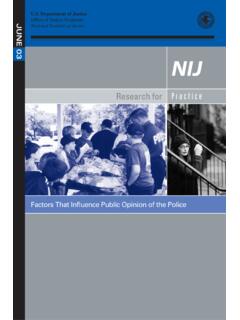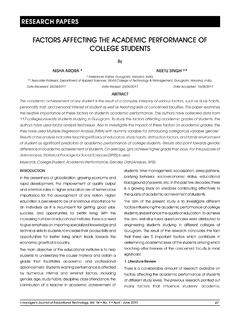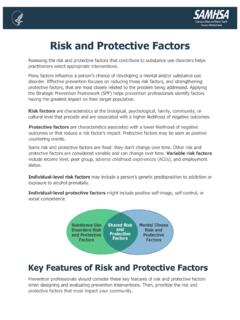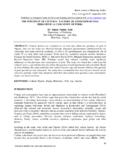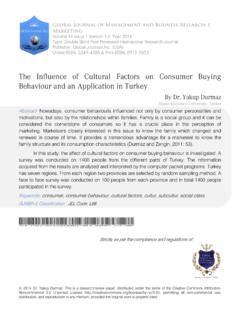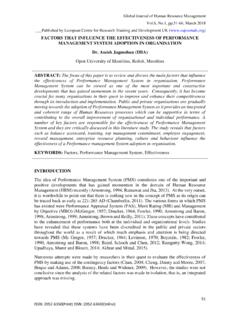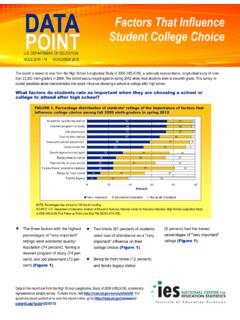Transcription of Factors that Influence Participation In Online Learning
1 Journal of Research on Technology in Education 213 Copyright 2005, ISTE (International Society for Technology in Education), ( & Canada) or (Int l), All rights that Influence Participation In Online LearningSelma VonderwellCleveland State UniversitySajit ZachariahThe University of AkronAbstractThis study explored what Factors influenced learner Participation in two sections of a graduate Online course at a Midwestern university. Findings indicated that Online learner Participation and patterns of Participation are influenced by the following Factors : technology and interface characteristics, content area experience, student roles and instructional tasks, and information overload.
2 Effective Online Learning requires interdependence for a shared understanding of Learning goals in a Learning community. Monitoring student Participation and patterns of Participation closely can help instructors identify student needs and scaffold Learning accord-ingly. (Keywords: Online Learning , learner Participation , asynchronous discussion, interface design, information overload)Educational institutions are increasingly adopting and implementing Online Learning . The rapid and expanding use of Online education in K 12, two-year colleges, and four-year university courses has been documented by the National Center for Education Statistics (NCES, 2003).
3 Educators, researchers, and in-structional designers are faced with the task of understanding the pedagogical implications of Online Learning . Learner Participation in Online Learning is often related to the percentage of grade weight assigned to discussions (Jiang & Ting, 2000). Criteria for evaluat-ing and assessing Online discussions, the written nature of Online discussions (Liang & Creasy, 2004), course design and instructor interventions (Bullen, 1998; Vrasidas & McIsaac, 1999), and learner background knowledge (Ross, 1996) can influence Participation . Several researchers have examined whether learner Participation patterns differ. Mason (1994) found that learners fall into three distinct groups in their Online Participation : active participants, lurkers (those who read messages but do not post messages), and those who do not take part.
4 Taylor (2002) investigated students Participation patterns in accessing and contributing to Online discussions and whether these Participation patterns influence academic achievement. He named the three groups he found: work-ers, proactive Participation group; lurkers, peripheral Participation group; and shirkers, parsimonious Participation group. Workers participated actively in the discussions and visited the class site regularly whereas lurkers participated oc-casionally, but mostly in a read-only mode. Shirkers performed the minimum required with fewer postings and visits to the class site. Taylor recommended that parameters for levels of learner Participation should be defined so that the reasons for varying degrees of engagement can be unpacked.
5 214 Winter 2005: Volume 38 Number 2 Copyright 2005, ISTE (International Society for Technology in Education), ( & Canada) or (Int l), All rights design elements in course management systems and discussion board interface may affect Participation and Learning . Online discussion is influenced by how people interact with the discussion interface (Hillman, Wil-lis & Gunawardena, 1994). Hewitt (2001, 2003) studied patterns of learners responses and how discussions evolve over time. He (2003) argued that many discussion participants adopt the strategy of examining unread messages and pay comparatively little attention to older ones.
6 He noted that growth patterns of Participation owing to the abandonment of older messages may be a strategy for learners to cope with busy discussion conferences and information overload. Hewitt further argued that the abandonment of older threads or messages can create changes in the topic. His studies are significant in understanding the in-fluence of interface and learners Participation habits on Learning outcomes in order to effectively structure Online Participation is an essential element for active and engaged Learning (Bloom, 1984; Chickering & Gamson, 1987; Fleming, 1987). Learners may adopt new personas and may not feel obligated or pressured to participate in Online communication when they do not see each other (Palloff & Pratt, 1999).
7 In this article, the authors define Participation as taking part and joining in a dialogue for engaged and active Learning . Participation is more than the total number of student postings in a discussion forum. Understanding the issues that influence Participation in the Online environment is essential for effectively designing and facilitating Online discussions. The research questions that guided this study were: In the two sections of an Online graduate course: What Factors influence learner Participation ? Are there any differences in the Factors that influence learner participa-tion between the two classes? Are there any differences in the patterns of learner Participation between the two classes?
8 METHODThe case study approach was used to achieve a comprehensive and in-depth understanding of the Factors influencing Participation in two sections of a graduate Online course: Planning for Technology. One section (Group A) included 13 inservice teachers, and the second section (Group B) included 12 students. Three of the Group B students were not inservice teachers two worked in higher education, and one worked in a non-profit educational organization. Three students in Group B who were in the K 12 education system were also involved in district technology planning. (It is important to know that these three students in Group B had been already working in plan-ning for technology in their districts, as they brought in a lot of their experi-ences to the class discussions, which enriched them.)
9 Two students in Group B who acted as facilitators had previous experience in facilitating Online dis-cussions. None of the students in Group A had previous experience in facili-tating Online discussions. Three students in each group acted as facilitators to lead the Online discussions. Journal of Research on Technology in Education 215 Copyright 2005, ISTE (International Society for Technology in Education), ( & Canada) or (Int l), All rights course included planning for technology, staff development, facilities and infrastructure, grant writing, evaluating the use of technology, and integrating technology. Three graded discussions and three non-graded discussions took place.
10 For each graded discussion, three students volunteered for one of the following tasks: the facilitator, critical reflector, and summarizer each week. For each discussion, three (different) students volunteered to have one of those tasks. At the beginning of the class, the students were informed of these roles and the responsibilities for each role. Then students volunteered on each role. Students had reported that they took the role with which they were most com-fortable. These roles were described as follows: Facilitator: Initiate the discussion, oversee the knowledge building process, the flow and direction of information. Critical reflector: Analyze and critique the posts, promote questions, engage the rest of the group to think critically about the issues related to the topic.










